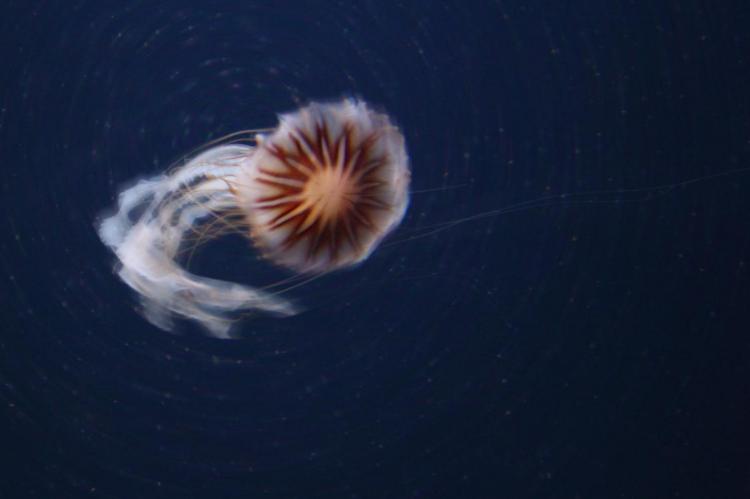Sinking jellyfish help oceans absorb more CO2
When jellyfish die and sink to the bottom of the ocean, organic carbon is sequestered in deep water layers or in sediments. Oceans absorb about 25 percent of the carbon dioxide (CO2 ) emitted by human activities.
When carbon dioxide from the atmosphere dissolves in seawater, various species convert it to organic carbon and other organic components during photosynthesis.
Jellyfish and pelagic tunicates live on smaller plankton and thus consume organic carbon. When they sink to the seafloor at the end of their life cycles, they take the carbon from the surface waters with them, provide it as food to organisms at the bottom or store it in deep water layers after decomposition.
An article in the scientific journal “Limnology and Oceanography” describes for the first time the sinking speed of organic remains from jellyfish and pelagic tunicates.
For the study, the sinking velocities of different species in the ocean were analyzed. For their experiments, scientists collected different species of scyphozoans (true jellyfish), ctenophores (comb jellies), and thaliaceans (salps) in the Baltic, the Mediterranean, the Atlantic and the Southern Ocean.
The sinking process was observed and filmed in large transparent cylinders filled with seawater at OceanLab Bremen by Dr. Pedro de Jesus Mendes.
Large quantities of carbon
Fast sinking means that the biomass and its constituents reach the deeper ocean layers without major degradation, where microbial decay releases CO2 that can be stored without direct contact with the atmosphere for millennia.
The jelly carbon content is lower on average than that of phytoplankton or marine snow. But their large populations, occupying at times hundreds of square kilometers in the oceans, combined with a high sinking speed, can deliver large carbon quantities to the seabed.
The sinking speed of jelly remains is much, much higher than what we expected, about 500 to 1600 meters per day.


